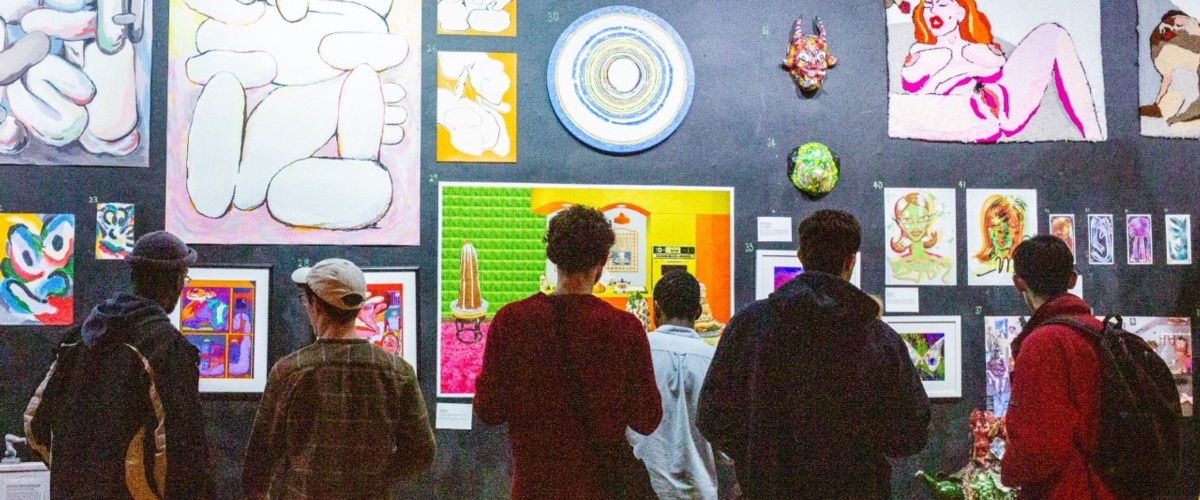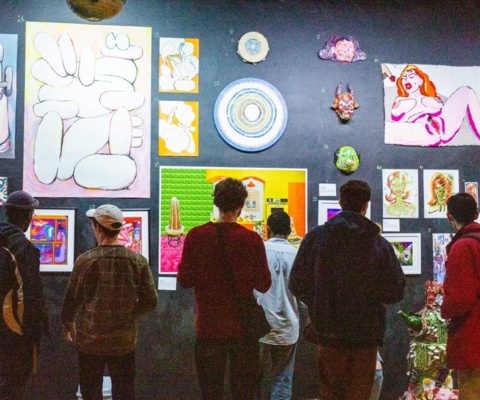Ever thought of studying History of Art? Here’s where it could take you… Read on to find out about what three ONs have gone on to do after their History of Art A-Level at Norwich School.
Ellie McKay (ON 16-21)
Ellie is currently studying at ancient history and archaeology at Durham University, taking art history modules. She has also been working with Norwich Castle Museum for two years to create an exhibition case for the redeveloped Keep. Through this experience and her studies in art history, she has decided she wants to become a museum curator in the future. Ellie explains more below.
“I’m currently doing a degree in ancient history and archaeology at Durham, but one of my modules (my favourite) is very much art history based as we look at a different object from antiquity each week and study its form and context. There are a lot of transferable skills that I gained doing art history A-Level that I can apply to that module. However, all my modules, as well as the subjects of classics and archaeology in general cross over with art history.
I’m looking to go into a career in museums, ideally curating, and I know my art history knowledge from A-Level will really help me here as well.
I have also visited numerous exhibitions in galleries across the UK that I know I wouldn’t have been interested in had I not studied art history at A-Level. I have a student Artfund pass for these exhibitions and I also receive many emails from Artfund about job opportunities in the arts / culture sector.
I have just finished working on a 2 year long project with Norwich Castle to create an exhibition case for their redeveloped Keep. I know I wouldn’t have been able to get this role without the transferable skills I got from my art history A-Level. My work with the Castle has allowed me to be part of 3 other projects with Norfolk Museum Services - working with a youth group in Kings Lynn, part of a ‘Young Art Advocates’ group at the Bridewell, and being in a TV show with Tony Robinson at the Castle.”
Maddie Clements (ON 14-19)
Maddie studied history of art at the Courtauld Institute, one of the world’s leading centres for the study of art history. Since graduating last year, Maddie decided to pursue a career in Marketing and PR having developed an eye for detail through her art history studies. Read on to hear from Maddie about how history of art impacted her choice of career.
“Since leaving Norwich School in 2019, I went on to study BA History of Art at the Courtauld Institute of Art. Unfortunately, most of the three years were in lockdown, however in my final year we did get the opportunity to attend lots of the seminars in person, and in galleries which was great! You also get all the amazing perks that come with being in London, for example, all the shared resources with KCL and UCL.
I graduated the Courtauld in 2022, and began my career in Marketing and PR. Studying history of art trains you to have an eye for detail, and helps you understand how the smallest visual changes can make the biggest conceptual differences.
As of this week, I have just started a new role in a Social Media Marketing agency. Less art history orientated but still a relevant industry, with an emphasis on text and visual pairings to reach the desired audiences with the desired message. To relate it back to art history; every modern-day brand and influencer is simply self-fashioning themselves!
To sum up, art history played a huge part in my choice of career. It equips you with a foundation knowledge of history, politics, philosophy, religion, culture and the visual arts; which are all extremely relevant subjects that will provide you with great transferable skills.”
Lucas Nieboer (ON 13-18)
Having studied art history at Manchester University, Lucas has decided to enter into the world of the arts in his career. He reveals more about this choice in the passage below.
“After finishing at school, I went on to Manchester University and studied Art History and Visual Culture. I undertook a work placement at the Whitworth, handling and archiving very expensive and delicate and lovely sculpture, watercolours, and even a genuine Van Gogh watercolour! I also had the chance to work on a project for the visually impaired called ‘Tactile Too’ which was very interesting. While there, I wrote a review of an exhibition which was published in Third Text:
http://thirdtext.org/nierboer-whitepsyche
I was please to pull off a final mark of 74 to get a first, despite helping run the student radio station as Deputy Station Manager on the side. My dissertation, ‘Sound, Listening, Pedagogy: The Art Activism of Ultra Red’ analysed the international political art collective who draw together pedagogy, avant-garde music theory, and conceptual, participatory, and educational art practices into one. I think it managed to excite and baffle my tutors in equal measure, which I was quite happy with. I now have somewhat of a specialism in the history of sound art.
More recently, (2021-) I’ve been involved with a cultural association that my friends from university setup in Chorlton called ‘On The Rag’ or ‘RAG gallery’. We provide a platform for ‘up and coming’ artists and curate mixed media events with performance, music and video.
I moved to Bristol to work for ‘Noods Radio’ for a few months and got involved in the art-muso scene there. I met an artist whilst working in a bar and we decided to start a magazine/exhibition together called Doozy Magazine. Last month we had our debut exhibition at a club/art space called Strange Brew, which was a grand success happily. The idea behind it was to bring together loads of artists (38 in total) with DJs, performers, actors, film, and video games to make something immersive, participatory and fun: a happening for the 21stC themed around ‘Play’.
None of this would have been possible without my A-Level Art History! I learnt how to contextualise and tell the story of objects and things and ideas as well as learning to analyse and discuss them in an academic context. It can be applied to any kind of ‘experience’ really: records, art, magazines, club nights. They’re all moments of expression in one way or another, and being able to be eloquent about why they are worth your time is so important in trying to take ideas to reality. On one level it’s about selling them to the right people, but it’s also about learning people’s tastes and being able to match something to them.
On another level, I’ve found people respond very well to art history as a degree across the board of more corporate jobs - recruitment, marketing, PR, especially. In some way, I think having an art history degree effectively gives your ‘taste’ a kind of credibility and grounding. I can’t imagine my life without it really. I think these skills are transferable regardless of your specialism but work best with a broad understanding of 20th Century and contemporary art history. Also, it’s just interesting! Rent and the real world aside, it’s something that enriches the way you see the world - architecture, design, art - you see more after studying art history!”


